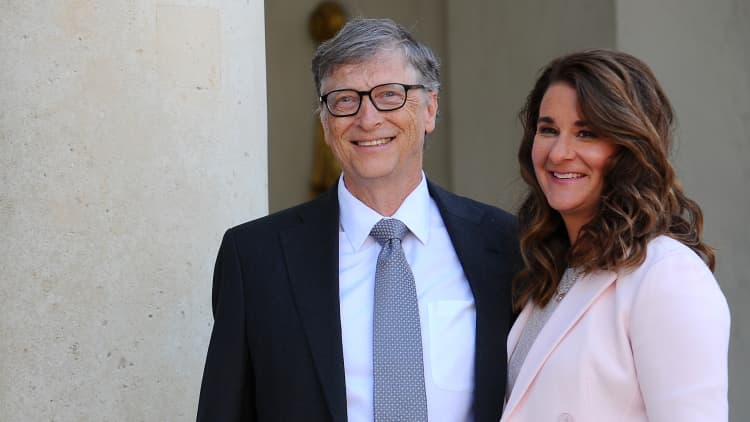Melinda Gates is seen as one of the most influential women in the world, both inside and out of the philanthropic space.
Yet, when she launched the Gates Foundation back in 2000 with husband and Microsoft co-founder Bill Gates, Melinda intended on having a more "behind the scenes" role.
"I had purposely tried to be behind the scenes, even with the foundation work when the kids were young, because I wanted them to get up and into school and have that privacy," Gates, philanthropist and co-chair of the Bill & Melinda Gates Foundation, told CNBC Meets.
"And I always said that I wouldn't spend as much time on the foundation until our youngest got into kindergarten; and then when she did, I started spending more and more time on the foundation."

As Melinda got more involved in foundation work, she realized that in order to represent the voices of women worldwide, she had to use her own voice.
"I can bring a perspective that's different than Bill's. I can bring these voices forward, and so I started to speak more publicly," Gates said.
Driven by ideals surrounding equality, the Bill and Melinda Gates Foundation works hard to assist people worldwide to lead "healthy, productive lives," from fighting extreme poverty and stamping out hunger in developing countries, to providing education opportunities in places such as the U.S.
In fact, the foundation recently teamed up with the MiSK Foundation to offer $10 million to innovators to fund ideas that would tackle global issues such as eradicating poverty. From Bill and Melinda Gates Foundation's inception in 2000 through to the end of 2016, it has made over $41 billion in total grant payments.
One area that the philanthropist had not intended on getting involved in was talking about contraceptives. Today, however, Melinda has become a vocal advocate for the access to contraception, a topic that continues to face opposition from people around the world.
I can bring a perspective that's different than Bill's. I can bring these voices forward.Melinda GatesCo-founder of the Bill & Melinda Gates Foundation
The topic of contraception wasn't something that Gates had intended on becoming a "global champion" for. However, in an interview with CNBC, she said that it was the women she had met from across the developing world that encouraged her to get involved.
"I was just shocked by how many women were asking me for contraceptives. And so I realized we needed to do something about it. And I kept, quite honestly, looking for the global champion, I did not want to be the one to take it on — and I couldn't find that person."
"I thought this work calls us to be our best selves. And it took a lot of courage to say, it's something I certainly believed and I believed in contraceptives for myself, I believed in telling my kids to use them and so I didn't have a problem with my values around that."
"But to stand up and say this is what I'm going to stand for, for the world, it took some courage. The more I stepped into it, the more I realized it had to be done," she said.
"I felt like that really needed my voice behind it, because we didn't have another global champion from it. And then it just grew from there."
Like this story? Like CNBC Make It on Facebook.
Don't miss:
How Meghan Markle became an advocate for women's rights at the age of 11
How an article in The Atlantic 'transformed' Anne-Marie Slaughter's life trajectory
How IMF chief Christine Lagarde dealt with rejection at a young age and learned from the experience




